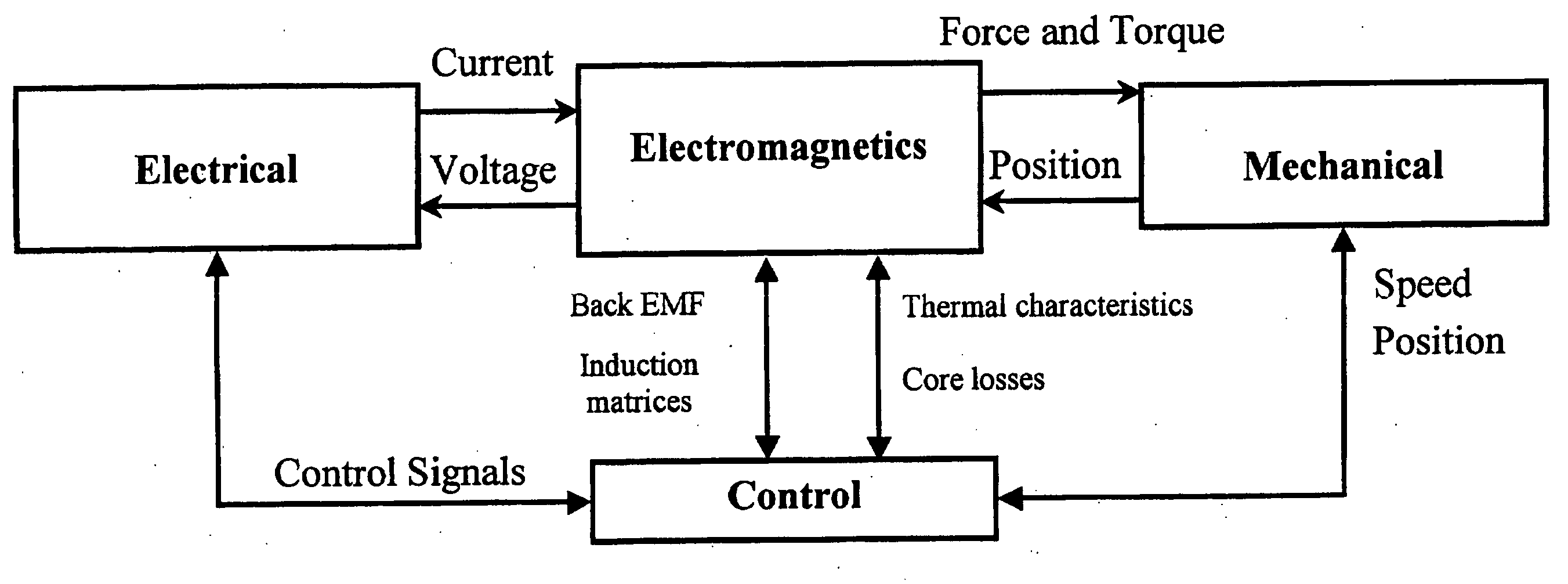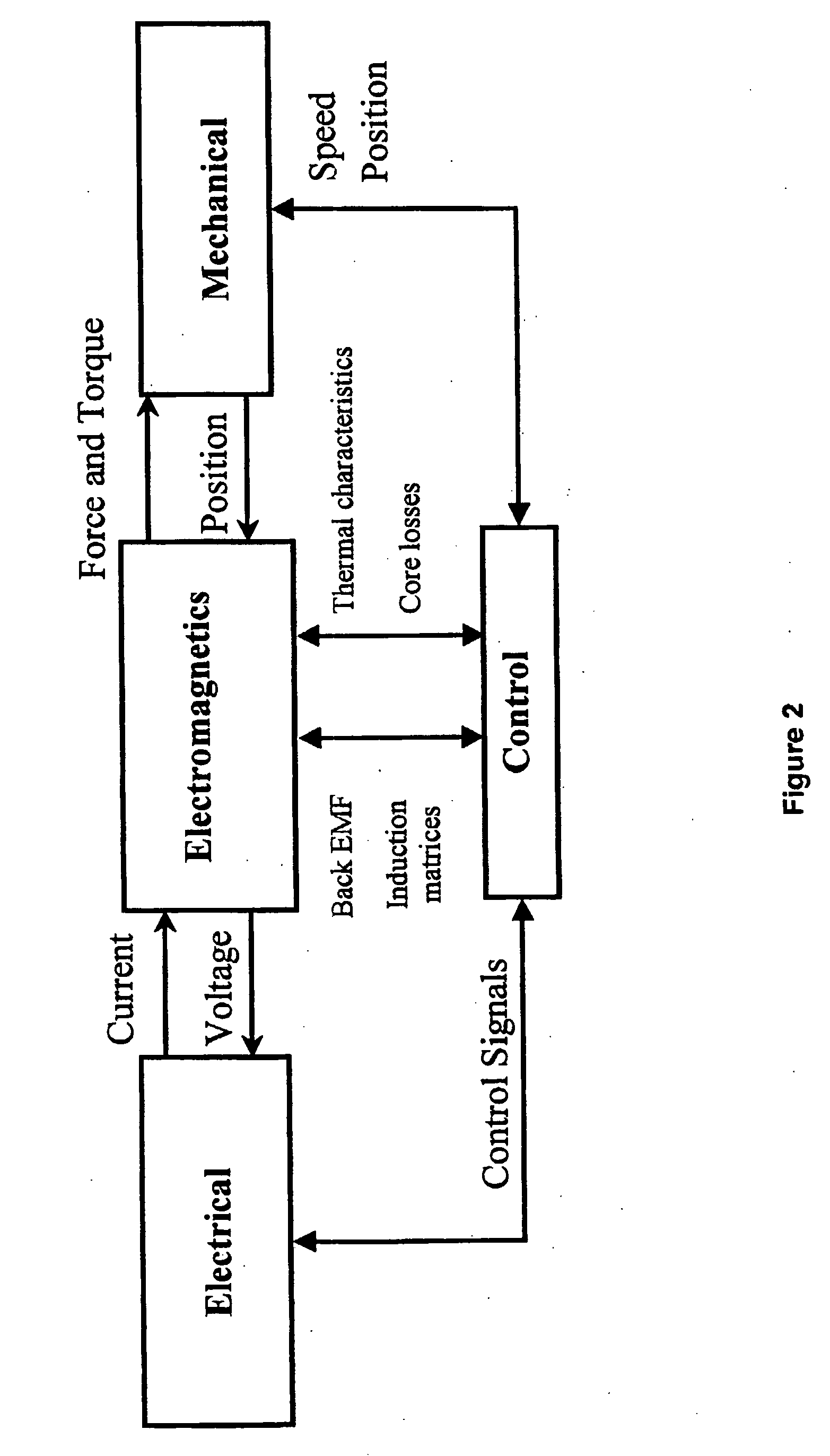Software-based adaptive control system for electric motors and generators
a software-based, adaptive control technology, applied in process and machine control, process/machine control, magnetic circuit shape/form/construction, etc., can solve the problems of low efficiency, low efficiency, and other disadvantages of existing control systems, and achieve high torque, high efficiency, and competitive cost
- Summary
- Abstract
- Description
- Claims
- Application Information
AI Technical Summary
Benefits of technology
Problems solved by technology
Method used
Image
Examples
Embodiment Construction
[0055] This invention provides a new type of adaptive control system for motors, generators and other electric machines. This adaptive control system improves machine performance by dynamically adapting to changes.
[0056] Most electric machines operate efficiently only within a narrow range of operating speeds. For example, an electric motor used in an electric car may be advertised as having a drive train that is over 90% efficient. Typically, that 90% efficiency is for steady cruising over level ground at relatively slow speeds, with no starts or stops. The drive train will usually be much less efficient, sometimes even 50% or less, over the entire driving cycle of a typical car.
[0057] An adaptive control system provides better performance. An electric car with an adaptive control system for its motors, a well-designed motor system, and advanced batteries and central controller, may be 90% efficient as much as 90% of the time, or more. An adaptive control system permits electric ...
PUM
 Login to View More
Login to View More Abstract
Description
Claims
Application Information
 Login to View More
Login to View More - R&D
- Intellectual Property
- Life Sciences
- Materials
- Tech Scout
- Unparalleled Data Quality
- Higher Quality Content
- 60% Fewer Hallucinations
Browse by: Latest US Patents, China's latest patents, Technical Efficacy Thesaurus, Application Domain, Technology Topic, Popular Technical Reports.
© 2025 PatSnap. All rights reserved.Legal|Privacy policy|Modern Slavery Act Transparency Statement|Sitemap|About US| Contact US: help@patsnap.com



